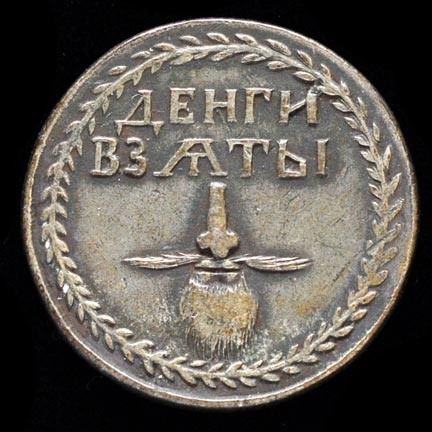Beard Dough

Peter the Great was the tzar of Russia from 1682 until his death in 1725. During that period, Europe was undergoing what is now known as the Age of Enlightenment, marked by a rise in the employment of science and logic in philosophy and culture. Russia was more medieval than Europe at the time, and Peter wished to move his people in the direction his European counterparts were going. He encouraged European dress, formed the nation’s first navy, switched the nation over to the Julian calendar (moving the start of the new year from September to January) and tried to end Russia’s culture of arranged marriages (believing that it created incompatible couples and therefore increased domestic violence).
And he taxed beards.
Peter saw facial hair — especially long beards — as a carryover from the days of Russian antiquity. In the late 1600s or very early 1700s, Peter ordered military officers to shave their beards, wanting to mimic what he saw as the more refined culture of the West. In 1705, that order applied to almost all men, from the Russian nobility (known as Boyards) down to the poorest peasant. (Clergy were excepted from the ban.) This was not well received, particularly by the Boyards, and Peter found a middle ground, mimicking a policy of Britain’s King Henry VIII from the mid-1500s. Peter instituted a sliding-scale beard tax, the price of which varied based on the class and occupation of the owner of the hair-adorned face. Pay it, and you get to keep your beard; otherwise, prepare to shave.
Taxpayers got to keep their hair and were also given a coin, pictured above, as evidence of their payment. The words on the front of the coin (above) mean “the beard tax has been taken” while the phrase on the back reads “the beard is an unnecessary burden,” as a parting shot against the pay-to-not-shave citizen. (An image of the other side can be found at the America.gov archive.) Members of the Boyards received silver tokens while the proletariat received copper ones; the tax amount for commoners likely didn’t allow for the investment by the state in a silver token.
The beard tax proved similarly unpopular, sparking citizen revolts while not deriving much in the way of revenue. It did not last past Peter’s reign. However, the goals of this reform — and the others, of course — were by and large achieved. As Peter the Great’s Wikipedia entry notes, the tzar was widely successful in modernizing Russia’s culture.
Bonus fact: Abraham Lincoln is generally depicted with a beard, which makes sense, given that during his four-plus years as President, he had one. But he did not start growing his beard until October of 1860, while on the campaign trail hoping to win election to the White House. (In fact, the image of him on WIkipedia’s page discussing the 1860 election shows Lincoln as clean-shaven.) What makes a 51 year-old Presidential candidate grow his first beard, just weeks before Election Day? In this case, all it took was a letter from an 11 year-old girl, seen here, who asserted, “[a]ll the ladies like whiskers and they would tease their husbands to vote for you and then you would be President.” Lincoln, apparently, agreed.
From the Archives: John Wilkes Booth’s Heroic Brother: Another story of Lincoln’s.
Related: “The Facial Hair Handbook” by Jack Passion. 31 reviews, 4.4 stars, and one incredibly long beard on the cover.
